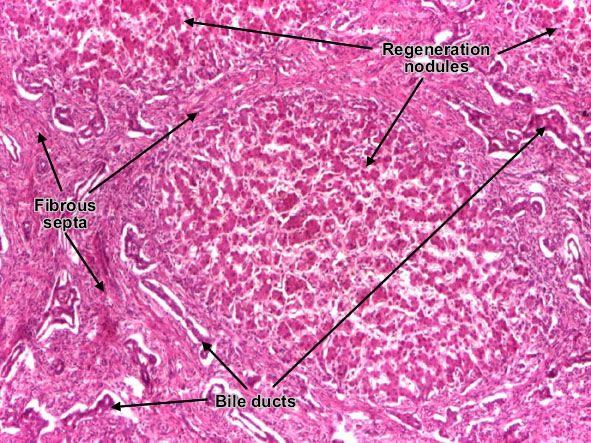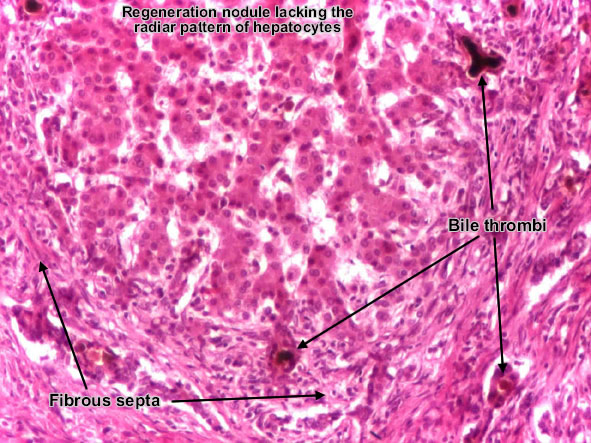Liver
Secondary biliary cirrhosis

Secondary biliary cirrhosis is produced by obstruction of extrahepatic biliary ducts and is characterized by regeneration nodules, surrounded by fibrous septa. In these nodules, regenerating hepatocytes are disorderly disposed. Biliary tract, central vein and the radiar pattern of hepatocytes are absent. Fibrous septa are important and may present inflammatory infiltrate (lymphocytes, macrophages) and biliary ducts (damaged, proliferated or distended - bile stasis). These dilated ducts contain inspissated bile which appear as bile casts or bile thrombi (brown-green, amorphous). Bile retention may be found also in the parenchyma, as the so called "bile lakes". (H&E, ob. x10)
Secondary biliary cirrhosis (detail)

Regeneration nodule in secondary biliary cirrhosis. (H&E, ob. x40)

